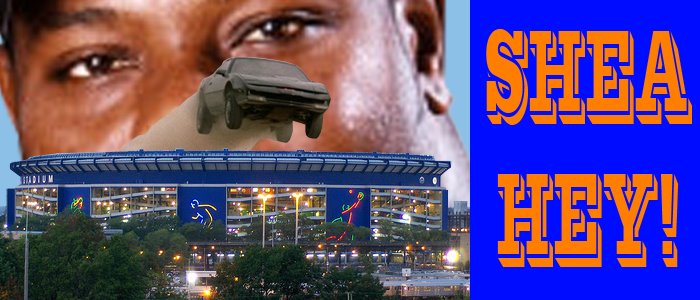
And just today, England defeated Australia at the famous Lord's Cricket Ground in London for the first time since 1934 to put them up 1-0 with three to play. I recently read a history of this ground, "Lord's: The Cathedral of Cricket" by Stephen Green and have scanned in some images of historical note:
Love the smirk of Mohinder Amarnath in this shot taken after India's 1983 Cricket World Cup victory. (One-Day Format)
 A typical cap worn by the England team during the 1930s. Baseball teams also wore short-brimmed caps in the early days. Cricketeers, such as current Aussie captain Ricky Ponting, still rock the short-brims today.
A typical cap worn by the England team during the 1930s. Baseball teams also wore short-brimmed caps in the early days. Cricketeers, such as current Aussie captain Ricky Ponting, still rock the short-brims today. This is W.G. Grace in a painting from 1890, who played from 1865 until 1908 and is considered one of the all-time greats. Grace dominated with both the bat and the ball as did Babe Ruth in this early career. Save for the beard a helmet and a sponsor's logo on the shirt, he would not look out of place in the crease today.
This is W.G. Grace in a painting from 1890, who played from 1865 until 1908 and is considered one of the all-time greats. Grace dominated with both the bat and the ball as did Babe Ruth in this early career. Save for the beard a helmet and a sponsor's logo on the shirt, he would not look out of place in the crease today. By 1880, the county cricket clubs around England had developed their own distinct identities, as seen in this drawing from 1880.
By 1880, the county cricket clubs around England had developed their own distinct identities, as seen in this drawing from 1880. Here is an early drawing of one of the first All-England teams from the 1830's. From the start the sport was played in all-whites, a tradition that continues only in Test cricket today.
Here is an early drawing of one of the first All-England teams from the 1830's. From the start the sport was played in all-whites, a tradition that continues only in Test cricket today. Here we see the interlocking letters of the Marylebone Cricket Club, in their "bacon-and-egg" colors. The club was responsible for codifying the laws of cricket and are the original inhabitants of Lord's and the keeper of the Ashes.
Here we see the interlocking letters of the Marylebone Cricket Club, in their "bacon-and-egg" colors. The club was responsible for codifying the laws of cricket and are the original inhabitants of Lord's and the keeper of the Ashes.The three remaining tests may be followed by reading the over-by-over report at the Guardian, listening to BBC Radio, or viewing live streams through various shady web sites. American cricket is covered well at thecrickettier.com, and cricketwithballs.com has done a bang-up job covering the Ashes through posts and podcasts.















2 comments:
Love it. There's nothing like The Ashes. I wonder what would have happened had Darryl Strawberry played cricket? Or Lenny Dykstra?
The articles in this particular a part of the blog are really excellent. High Quality, long lasting Garden cricket netting using club standard 2mm thick, 50mm mesh cricket netting, optional roof netting for extra safety in a one piece cricket net with guys, ropes and pegs.
Post a Comment